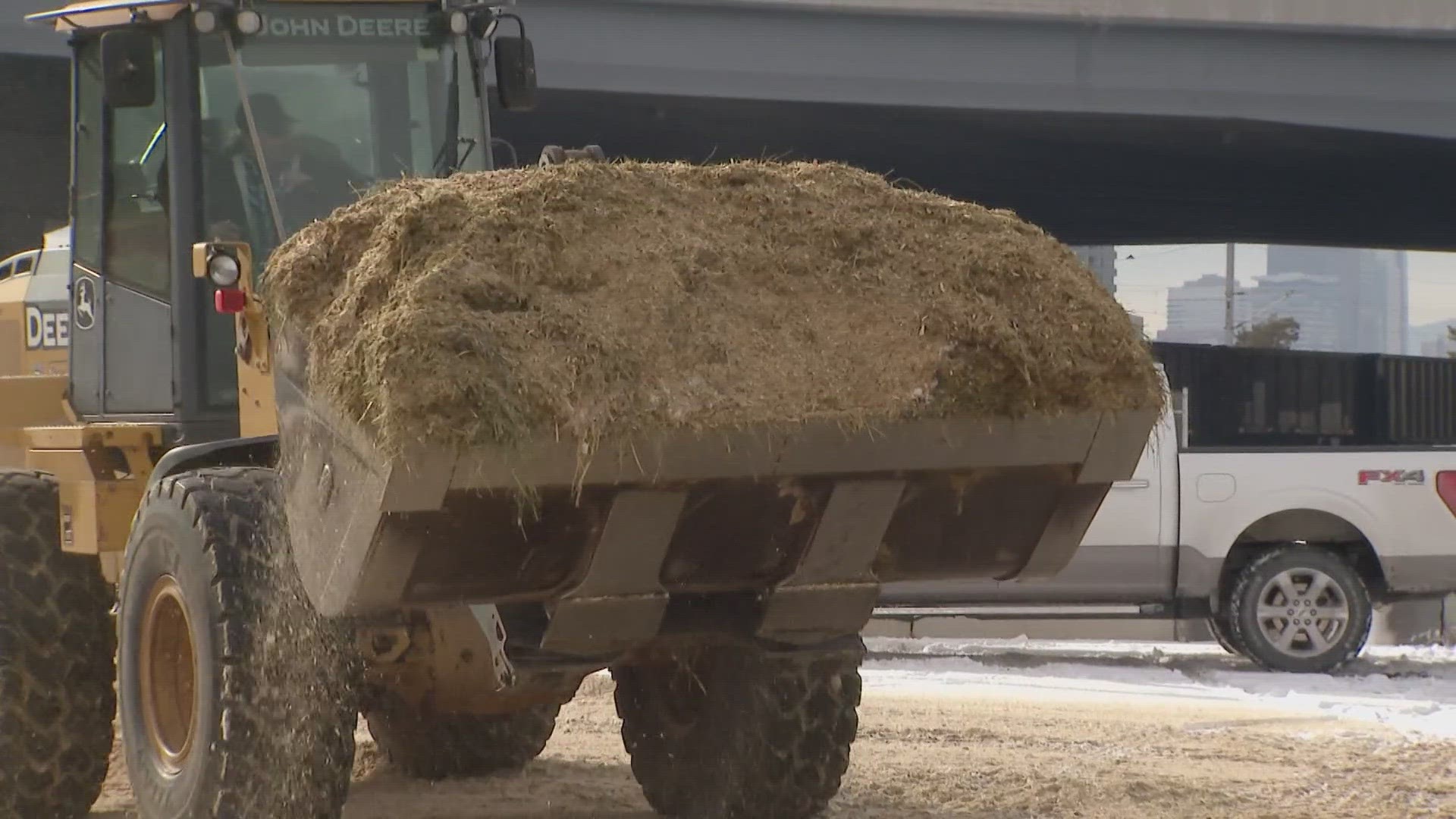DENVER — Altogether, 13,500 animals take part in the National Western Stock Show, and a lot of animals means a lot of poop.
"There is certainly a lot of cleaning," said Kevin Bode, senior director of operations for the Stock Show. "We have a lot of it. ... There's a lot of shavings, a lot of straw and a lot of animal waste, from all kinds of different breeds."
About 85 semi-truck loads of manure pile up every year. That leads to the question: What does one do with all that do-do?
"People frequently ask what we do with this," said Michael Croissant, owner of Colorado-based B.O.S.S. Compost. "They just call me Mr. S-word. I don't like swearing, but ... it's a badge of honor."
Croissant and his crews have been hauling off Stock Show manure for the past two decades. They scoop it into semi-trucks and drive it to a ranch in Fort Lupton, where the material is turned into certified organic compost.
"We roll it up, we add some more cow manure and ... five times over a month, we turn it, and we heat it up 141 degrees," Croissant said.
"It kills any e-coli and pathogens naturally," he said. "It's a natural way of doing it."
The semi-truck trailers have to be made out of stainless steel because that's the only metal that can withstand the power of the poop.
"Our microbes are so good naturally ... they'll eat up our trailers unless it's stainless steel," Croissant said.
After the process is complete, the compost is shipped to retail locations across the Front Range to be used as organic fertilizer for things such as lawns, gardens and farms.
"We've got, as you can see, quite a mountain of waste here, and it makes great fertilizer," Bode said. "What better way than to try and recycle and use it to grow future crops?"
In addition to recycling waste, the National Western Stock Show also reduces it by using more efficient bedding for the livestock. While organizers actually increased the number of livestock in the yards by 40%, they increased the amount of bedding materials by only 10%.
More 9NEWS Colorado Climate stories:
SUGGESTED VIDEOS: Colorado Climate

